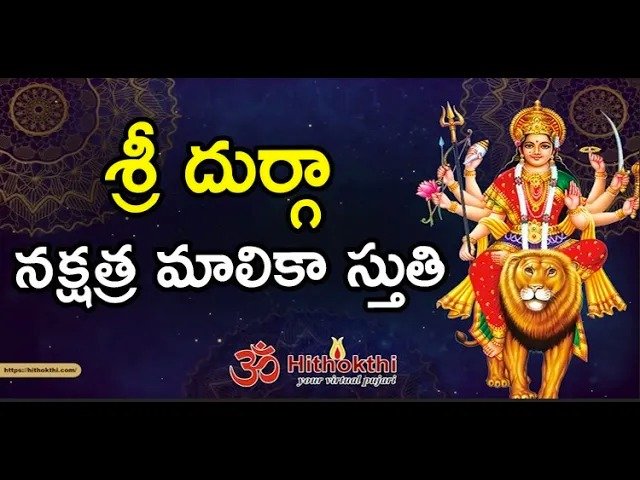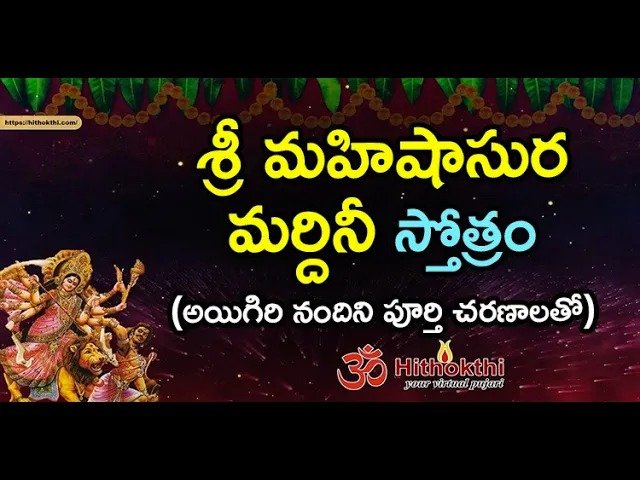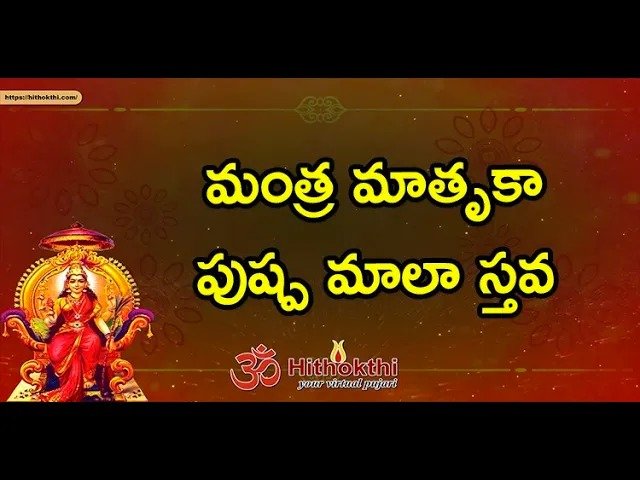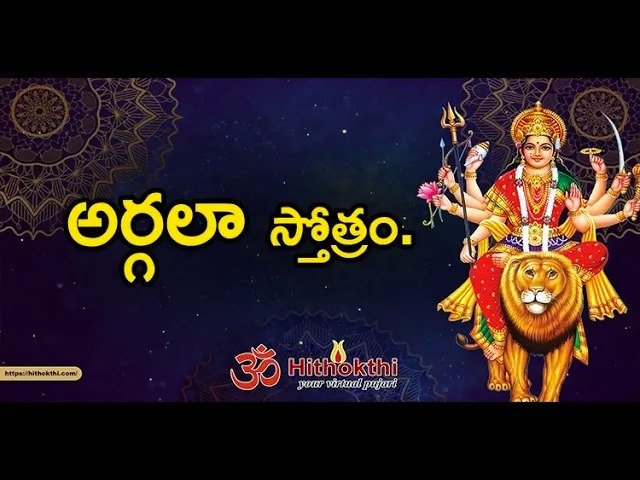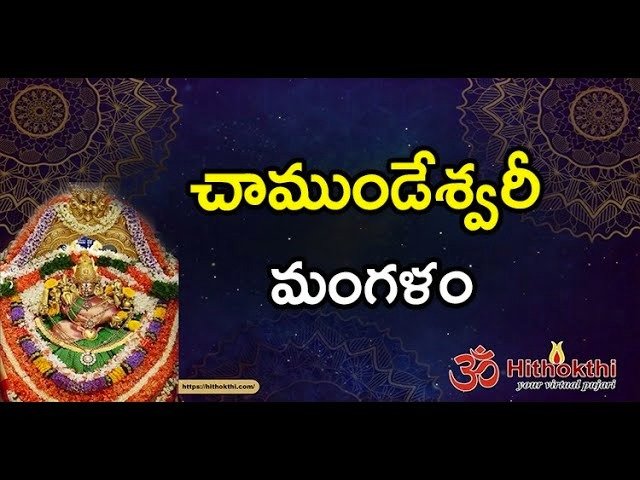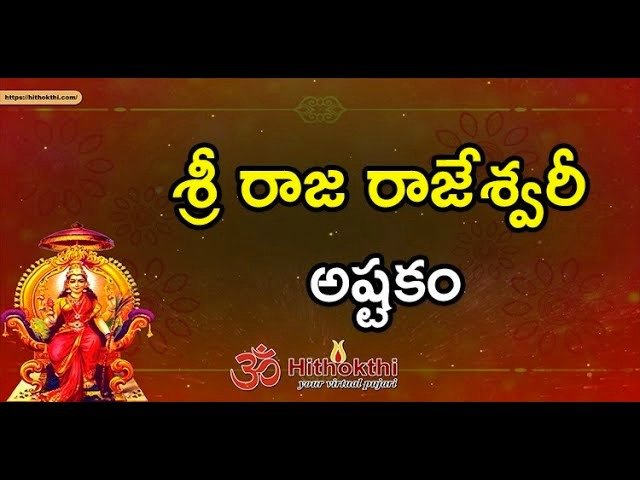Katha Upanishad Part 3, 4, 5 & 6
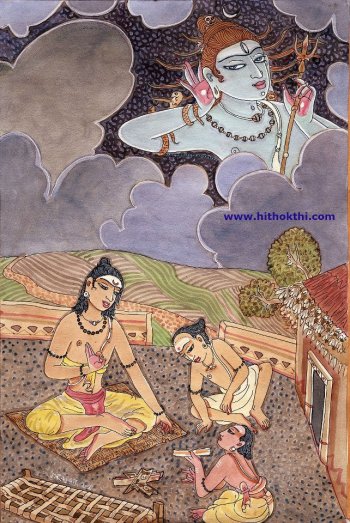
Part Third
I
There are two who enjoy the fruits of their good deeds in the world, having entered into the cave of the heart, seated (there) on the highest summit. The knowers of Brahman call them shadow and light. So also (they are called) by householders who perform five fire– sacrifices or three Nachiketa fire–sacrifices. Here the two signify the Higher Self and the lower self, dwelling in the innermost cave of the heart. The Seers of Truth, as well as householders who follow the path of rituals and outer forms with the hope of enjoying the fruits of their good deeds, both proclaim that the Higher Self is like a light and the lower self like a shadow. When the Truth shines clearly in the heart of the knower, then he surmounts the apparent duality of his nature and becomes convinced that there is but One, and that all outer manifestations are nothing but reflections or projections of that One.
II
May we be able to learn that Nachiketa fire–sacrifice, which is a bridge for those who perform sacrifice. May we also know the One, who is the highest imperishable Brahman for those who desire to cross over to the other shore which is beyond fear. The significance of this text is May we acquire the knowledge of Brahman, the Supreme, in both manifested and unmanifested form. He is manifested as the Lord of sacrifice for those who follow the path of ritual He is the unmanifested, eternal, universal Supreme Being for those who follow the path of wisdom. The “other shore,” being the realm of immortality, is said to be beyond fear; because disease, death, and all that which mortals fear, cease to exist there. It is believed by many that these two opening verses were a later interpolation.
III
Know the Atman (Self) as the lord of the chariot, and the body as the chariot. Know also the intellect to be the driver and mind the reins.
IV
The senses are called the horses; the sense objects are the roads; when the Atman is united with body, senses and mind, then the wise call Him the enjoyer. In the third chapter Yama defines what part of our being dies and what part is deathless, what is mortal and what is immortal. But the Atman, the Higher Self, is so entirely beyond human conception that it is impossible to give a direct definition of It. Only through similies can some idea of It be conveyed. That is the reason why all the great Teachers of the world have so often taught in the form of parables. So here the Ruler of Death represents the Self as the lord of this chariot of the body. The intellect or discriminative faculty is the driver, who controls these wild horses of the senses by holding firmly the reins of the mind. The roads over which these horses travel are made up of all the external objects which attract or repel the senses:–the sense of smelling follows the path of sweet odours, the sense of seeing the way of beautiful sights. Thus each sense, unless restrained by the discriminative faculty, seeks to go out towards its special objects. When the Self is joined with body, mind and senses, It is called the intelligent enjoyer; because It is the one who wills, feels, perceives and does everything.
V
He who is without discrimination and whose mind is always uncontrolled, his senses are unmanageable, like the vicious horses of a driver.
VI
But he who is full of discrimination and whose mind is always controlled, his senses are manageable, like the good horses of a driver. The man whose intellect is not discriminative and who fails to distinguish right from wrong, the real from the unreal, is carried away by his sense passions and desires, just as a driver is carried away by vicious horses over which he has lost control. But he who clearly distinguishes what is good from what is merely pleasant, and controls all his out–going forces from running after apparent momentary pleasures, his senses obey and serve him as good horses obey their driver.
VII
He who does not possess discrimination, whose mind is uncontrolled and always impure, he does not reach that goal, but falls again into Samsara (realm of birth and death).
VIII
But he who possesses right discrimination, whose mind is under control and always pure, he reaches that goal, from which he is not born again.
IX
The man who has a discriminative intellect for the driver, and a controlled mind for the reins, reaches the end of the journey, the highest place of Vishnu (the All–pervading and Unchangeable One). A driver must possess first a thorough knowledge of the road; next he must understand how to handle the reins and control his horses. Then will he drive safely to his destination. Similarly in this journey of life, our mind and senses must be wholly under the control of our higher discriminative faculty; for only when all our forces work in unison can we hope to reach the goal–the abode of Absolute Truth.
X
Beyond the senses are the objects, beyond the objects is the mind, beyond the mind is the intellect, beyond the intellect is the great Atman.
XI
Beyond the great Atman is the Unmanifested; beyond the Unmanifested is the Purusha (the Cosmic Soul); beyond the Purusha there is nothing. That is the end, that is the final goal. In these two verses the Teacher shows the process of discrimination, by which one attains knowledge of the subtle Self. Beginning with the sense–organs, he leads up to the less and less gross, until he reaches that which is subtlest of all, the true Self of man. The senses are dependent on sense–objects, because without these the senses would have no utility. Superior to sense–objects is the mind, because unless these objects affect the mind, they cannot influence the senses. Over the mind the determinative faculty exercises power; this determinative faculty is governed by the individual Self; beyond this Self is the undifferentiated creative energy known as Avyaktam; and above this is the Purusha or Supreme Self. Than this there is nothing higher. That is the goal, the Highest Abode of Peace and Bliss.
XII
This Atman (Self), hidden in all beings, does not shine forth; but It is seen by subtle seers through keen and subtle understanding. If It dwells in all living beings, why do we not see It? Because the ordinary man’s vision is too dull and distracted. It is visible to those alone whose intellect has been purified by constant thought on the Supreme, and whose sight therefore has become refined and sharpened. This keenness of vision comes only when all our forces have been made one– pointed through steadfast practice of concentration and meditation.
XIII
A wise man should control speech by mind, mind by intellect, intellect by the great Atman, and that by the Peaceful One (the Paramatman or Supreme Self). Here Yama gives the practical method to be followed if one wishes to realize the Supreme. The word “speech” stands for all the senses. First, therefore, a man must control his outgoing senses by the mind. Then the mind must be brought under the control of the discriminative faculty; that is, it must be withdrawn from all sense–objects and cease to waste its energies on nonessential things. The discriminative faculty in turn must be controlled by the higher individual intelligence and this must be governed wholly by the Supreme Intelligence.
XIV
A rise! Awake! Having reached the Great Ones (illumined Teachers), gain understanding. The path is as sharp as a razor, impassable and difficult to travel, so the wise declare. This is the eternal call of the wise: Awake from the slumber of ignorance! Arise and seek out those who know the Truth, because only those who have direct vision of Truth are capable of teaching It. Invoke their blessing with a humble spirit and seek to be instructed by them. The path is very difficult to tread. No thoughtless or lethargic person can safely travel on it. One must be strong, wakeful and persevering.
XV
Knowing That which is soundless, touchless, formless, undecaying; also tasteless, odorless, and eternal; beginningless, endless and immutable; beyond the Unmanifested: (knowing That) man escapes from the mouth of death. The Ruler of Death defines here the innermost essence of our being. Because of its extreme subtlety, it cannot be heard or felt or smelled or tasted like any ordinary object. It never dies. It has no beginning or end. It is unchangeable. Realizing this Supreme Reality, man escapes from death and attains everlasting life. Thus the Teacher has gradually led Nachiketas to a point where he can reveal to him the secret of death. The boy had thought that there was a place where he could stay and become immortal. But Yama shows him that immortality is a state of consciousness and is not gained so long as man clings to name and form, or to perishable objects. What dies? Form. Therefore the formful man dies; but not that which dwells within. Although inconceivably subtle, the Sages have always made an effort through similies and analogies to give some idea of this inner Self or the God within. They have described It as beyond mind and speech; too subtle for ordinary perception, but not beyond the range of purified vision.
XVI
The intelligent man, who has heard and repeated the ancient story of Nachiketas, told by the Ruler of Death, is glorified in the world of Brahman.
XVII
He who with devotion recites this highest secret of immortality before an assembly of Brahmanas (pious men) or at the time of Shraddha (funeral ceremonies), gains everlasting reward, he gains everlasting reward.
Part Fourth
I
The Self–existent created the senses out–going; for this reason man sees the external, but not the inner Atman (Self). Some wise man, however, desiring immortality, with eyes turned away (from the external) sees the Atman within. In the last chapter the Ruler of Death instructed Nachiketas regarding the nature and glory of the Self. Now he shows the reason why the Self is not seen by the majority. It is because man’s mind is constantly drawn outward through the channels of his senses, and this prevents his seeing the inner Self (Pratyagatman); but now and then a seeker, wiser than others, goes within and attains the vision of the undying Self.
II
Children (the ignorant) pursue external pleasures; (thus) they fall into the wide– spread snare of death. But the wise, knowing the nature of immortality, do not seek the permanent among fleeting things. Those who are devoid of discrimination and fail to distinguish between real and unreal, the fleeting and the permanent, set their hearts on the changeable things of this world; hence they entangle themselves in the net of insatiable desire, which leads inevitably to disappointment and suffering. To such, death must seem a reality because they identify themselves with that which is born and which dies. But the wise, who see deeper into the nature of things, are no longer deluded by the charm of the phenomenal world and do not seek for permanent happiness among its passing enjoyments.
III
That by which one knows form, taste, smell, sound, touch and sense enjoyments, by That also one knows whatever remains (to be known). This verily is That (which thou hast asked to know).
IV
That by which a mortal perceives, both in dream and in waking, by knowing that great all– pervading Atman the wise man grieves no more. In these verses the teacher tries to make plain that all knowledge, as well as all sense perception, in every state of consciousness–sleeping, dreaming or waking–is possible only because the Self exists. There can be no knowledge or perception independent of the Self. Wise men, aware of this, identify themselves with their Higher Self and thus transcend the realm of grief.
V
He who knows this Atman, the honey–eater (perceiver and enjoyer of objects), ever near, as the lord of the past and future, fears no more. This verily is That.
VI
He who sees Him seated in the five elements, born of Tapas (fire of Brahman), born before water; who, having entered the cave of the heart, abides therein –this verily is That. This verse indicates that He, the Great Self, is the cause of all created objects. According to the Vedas, His first manifestation was Brahma, the Personal God or Creator, born of the fire of wisdom. He existed before the evolution of the five elements– earth, water, fire, air and ether; hence He was “born before water.” He is the Self dwelling in the hearts of all creatures.
VII
He who knows Aditi, who rises with Prana (the Life Principle), existent in all the Devas; who, having entered into the heart, abides there; and who was born from the elements– this verily is That. This verse is somewhat obscure and seems like an interpolated amplification of the preceding verse.
VIII
The all–seeing fire which exists hidden in the two sticks, as the foetus is well–guarded in the womb by the mother, (that fire) is to be worshipped day after day by wakeful seekers (after wisdom), as well as by sacrificers. This verily is That. Fire is called all–seeing because its light makes everything visible. In Vedic sacrifices the altar fire was always kindled by rubbing together two sticks of a special kind of wood called Arani. Because fire was regarded as one of the most perfect symbols of Divine wisdom, it was to be worshipped by all seekers after Truth, whether they followed the path of meditation or the path of rituals.
IX
From whence the sun rises, and whither it goes at setting, upon That all the Devas depend. No one goes beyond That. This verily is That.
X
What is here (in the visible world), that is there (in the invisible); he who sees difference (between visible and invisible) goes from death to death.
XI
By mind alone this is to be realized. There is no difference whatever (between visible and invisible). He who sees difference here (between these) goes from death to death. In the sight of true wisdom, there is no difference between the creator and the created. Even physical science has come to recognize that cause and effect are but two aspects of one manifestation of energy. He who fails to see this, being engrossed in the visible only, goes from death to death; because he clings to external forms which are perishable. Only the essence which dwells within is unchangeable and imperishable. This knowledge of the oneness of visible and invisible, however, cannot be acquired through sense–perception. It can only be attained by the purified mind.
XII
The Purusha (Self), of the size of a thumb, resides in the middle of the body as the lord of the past and the future, (he who knows Him) fears no more. This verily is That. The seat of the Purusha is said to be the heart, hence It “resides in the middle of the body.” Although It is limitless and all–pervading, yet in relation to Its abiding–place It is represented as limited in extension, “the size of a thumb.” This refers really to the heart, which in shape may be likened to a thumb. s light is everywhere, yet we see it focused in a lamp and believe it to be there only; similarly, although the life–current flows everywhere in the body, the heart is regarded as peculiarly its seat.
XIII
That Purusha, of the size of a thumb, is like a light without smoke, lord of the past and the future. He is the same today and tomorrow. This verily is That. In this verse the teacher defines the effulgent nature of the Soul, whose light is pure like a flame without smoke. He also answers the question put by Nachiketas as to what happens after death, by declaring that no real change takes place, because the Soul is ever the same.
XIV
As rain water, (falling) on the mountain top, runs down over the rocks on all sides; similarly, he who sees difference (between visible forms) runs after them in various directions.
XV
O Gautama (Nachiketas), as pure water poured into pure water becomes one, so also is it with the Self of an illumined Knower (he becomes one with the Supreme).
Part Fifth
I
The city of the Unborn, whose knowledge is unchanging, has eleven gates. Thinking on Him, man grieves no more; and being freed (from ignorance), he attains liberation. This verily is That. This human body is called a city with eleven gates, where the eternal unborn Spirit dwells. These gates are the two eyes, two ears, two nostrils, the mouth, the navel, the two lower apertures, and the imperceptible opening at the top of the head. The Self or Atman holds the position of ruler in this city; and being above the modifications of birth, death and all human imperfections, It is not affected by the changes of the physical organism. As the intelligent man through constant thought and meditation realizes the splendour of this Supreme Spirit, he becomes free from that part of his nature which grieves and suffers, and thus he attains liberation.
II
He is the sun dwelling in the bright heaven; He is the air dwelling in space; He is the fire burning on the altar; He is the guest dwelling in the house. He dwells in man. He dwells in those greater than man. He dwells in sacrifice. He dwells in the ether. He is (all that is) born in water, (all that) is born in earth, (all that) is born in sacrifice, (all that) is born on mountains. He is the True and the Great.
III
He it is who sends the (in–coming) Prana (life–breath) upward and throws the (out–going) breath downward. Him all the senses worship, the adorable Atman, seated in the centre (the heart).
IV
When this Atman, which is seated in the body, goes out (from the body), what remains then? This verily is That.
V
No mortal lives by the in–coming breath (Prana) or by the out–going breath (Apana), but he lives by another on which these two depend.
VI
O Gautama (Nachiketas), I shall declare unto thee the secret of the eternal Brahman and what happens to the Self after death.
VII
Some Jivas (individual Souls) enter wombs to be embodied; others go into immovable forms, according to their deeds and knowledge. This text shows the application of the law of cause and effect to all forms of life. The thoughts and actions of the present life determine the future birth and environment.
VIII
The Being who remains awake while all sleep, who grants all desires, That is pure, That is Brahman, That alone is said to be immortal. On That all the worlds rest. None goes beyond That. This verily is That.
IX
As fire, though one, having entered the world, becomes various according to what it burns, so does the Atman (Self) within all living beings, though one, become various according to what it enters. It also exists outside.
X
As air, though one, having entered the world, becomes various according to what it enters, so does the Atman within all living beings, though one, become various according to what it enters. It also exists outside. By using these similies of fire and air, the teacher tries to show Nachiketas the subtle quality of the great Self, who, although one and formless like air and fire, yet assumes different shapes according to the form in which It dwells. But, being all–pervading and unlimited, It cannot be confined to these forms; therefore it is said that It also exists outside all forms.
XI
As the sun, the eye of the whole world, is not defiled by external impurities seen by the eyes, thus the one inner Self of all living beings is not defiled by the misery of the world, being outside it. The sun is called the eye of the world because it reveals all objects. As the sun may shine on the most impure object, yet remain uncontaminated by it, so the Divine Self within is not touched by the impurity or suffering of the physical form in which it dwells, the Self being beyond all bodily limitations.
XII
There is one ruler, the Self of all living beings, who makes the one form manifold; the wise who perceive Him seated within their Self, to them belongs eternal bliss, not to others.
XIII
Eternal among the changing, consciousness of the conscious, who, though one, fulfils the desires of many: the wise who perceive Him seated within their Self, to them belongs eternal peace, not to others.
XIV
They (the wise) perceive that indescribable highest bliss, saying, This is That. How am I to know It? Does It shine (by Its own light) or does It shine (by reflected light)?
XV
The sun does not shine there, nor the moon, nor the stars; nor do these lightnings shine there, much less this fire. When He shines, everything shines after Him; by His light all is lighted.
Part Sixth
I
This ancient Aswattha tree has its root above and branches below. That is pure, That is Brahman, That alone is called the Immortal. All the worlds rest in That. None goes beyond That. This verily is That. This verse indicates the origin of the tree of creation (the Samsara–Vriksha), which is rooted above in Brahman, the Supreme, and sends its branches downward into the phenomenal world. Heat and cold, pleasure and pain, birth and death, and all the shifting conditions of the mortal realm–these are the branches; but the origin of the tree, the Brahman, is eternally pure, unchanging, free and deathless. From the highest angelic form to the minutest atom, all created things have their origin in Him. He is the foundation of the universe. There is nothing beyond Him.
II
Whatever there is in the universe is evolved from Prana and vibrates in Prana. That is a mighty terror, like an upraised thunderbolt. They who know That become immortal.
III
From fear of Him the fire burns, from fear of Him the sun shines. From fear of Him Indra and Vayu and Death, the fifth, speed forth. Just as the body cannot live or act without the Soul, similarly nothing in the created world can exist independent of Brahman, who is the basis of all existence. His position is like that of a king whom all must obey; hence it is said that the gods of sun, moon, wind, rain, do His bidding. He is likened to an upraised thunderbolt, because of the impartial and inevitable nature of His law, which all powers, great or small, must obey absolutely.
IV
If a man is not able to know Him before the dissolution of the body, then he becomes embodied again in the created worlds. As soon as a man acquires knowledge of the Supreme, he is liberated; but if he fails to attain such knowledge before his Soul is separated from the body, then he must take other bodies and return again and again to this realm of birth and death, until through varied experience he realizes the nature of the Supreme and his relation to Him.
V
As in a mirror, so is He seen within oneself; as in a dream, so (is He seen) in the world of the fathers (departed spirits); as in water, so (is He seen) in the world of Gandharvas (the angelic realm). As light and shadow, so (is He seen) in the world of Brahma (the Creator). When by means of a purified understanding one beholds God within, the image is distinct as in a polished mirror; but one cannot have clear vision of the Supreme by attaining to the various realms known as heavens, where one reaps the fruit of his good deeds. It is only by developing one’s highest consciousness here in this life that perfect God–vision can be attained.
VI
Knowing that the senses are distinct (from the Atman) and their rising and setting separate (from the Atman), a wise man grieves no more. A wise man never confounds the Atman, which is birthless and deathless, with that which has beginning and end. Therefore, when he sees his senses and his physical organism waxing and waning, he knows that his real Self within can never be affected by these outer changes, so he remains unmoved.
VII
Higher than the senses is the mind, higher than the mind is the intellect, higher than the intellect is the great Atman, higher than the Atman is the Unmanifested.
VIII
Beyond the Unmanifested is the all–pervading and imperceptible Being (Purusha). By knowing Him, the mortal is liberated and attains immortality. This division of the individual into senses, mind, intellect, self–consciousness, undifferentiated creative energy and the Absolute Self is explained in the commentary of verse XI,
IX
His form is not to be seen. No one can see Him with the eye. He is perceived by the heart, by the intellect and by the mind. They who know this become immortal. The Supreme, being formless, cannot be discerned by the senses, hence all knowledge of Him must be acquired by the subtler faculties of heart, intellect and mind, which are developed only through the purifying practice of meditation.
X
When the five organs of perception become still, together with the mind, and the intellect ceases to be active: that is called the highest state. The teacher now shows Nachiketas the process by which the transcendental vision can be attained. he out–going senses,–seeing, hearing, smelling, touching, tasting; the restless mind and the intellect: all must be indrawn and quieted. The state of equilibrium thus attained is called the highest state, because all the forces of one’s being become united and focused; and this inevitably leads to supersensuous vision.
XI
This firm holding back of the senses is what is known as Yoga. Then one should become watchful, for Yoga comes and goes. Yoga literally means to join or to unite the lower self with the Higher Self, the object with the subject, the worshipper with God. In order to gain this union, however, one must first disunite oneself from all that scatters the physical, mental and intellectual forces; so the outgoing perceptions must be detached from the external world and indrawn. When this is accomplished through constant practice of concentration and meditation, the union takes place of its own accord. But it may be lost again, unless one is watchful.
XII
He cannot be attained by speech, by mind, or by the eye. How can That be realized except by him who says “He is”?
XIII
He should be realized as “He is” and also as the reality of both (visible and invisible). He who knows Him as “He is,” to him alone His real nature is revealed. This supersensuous vision cannot be gained through man’s ordinary faculties. By mind, eye, or speech the manifested attributes of the Divine can be apprehended; but only one who has acquired the supersensuous sight can directly perceive God’s existence and declare definitely that “He is,” that He alone exists in both the visible and the invisible world.
XIV
When all desires dwelling in the heart cease, then the mortal becomes immortal and attains Brahman here.
XV
When all the ties of the heart are cut asunder here, then the mortal becomes immortal. Such is the teaching.
XVI
There are a hundred and one nerves of the heart. One of them penetrates the centre of the head. Going upward through it, one attains immortality. The other (hundred nerve– courses) lead, in departing, to different worlds. The nervous system of the body provides the channels through which the mind travels; the direction in which it moves is determined by its desires and tendencies. When the mind becomes pure and desireless, it takes the upward course and at the time of departing passes out through the imperceptible opening at the crown of the head; but as long as it remains full of desires, its course is downward towards the realms where those desires can be satisfied.
XVII
The Purusha, the inner Self, of the size of a thumb, is ever seated in the heart of all living beings. With perseverance man should draw Him out from his body as one draws the inner stalk from a blade of grass. One should know Him as pure and deathless, as pure and deathless.
As has been explained in Part Fourth, verse XII, the inner Self, although unlimited, is described as “the size of a thumb” because of its abiding–place in the heart, often likened to a lotus–bud which is similar to a thumb in size and shape. Through the process of steadfast discrimination, one should learn to differentiate the Soul from the body, just as one separates the pith from a reed.
XVIII
Thus Nachiketas, having acquired this wisdom taught by the Ruler of Death, together with all the rules of Yoga, became free from impurity and death and attained Brahman (the Supreme). So also will it be with another who likewise knows the nature of the Self. PEACE CHANT May He (the Supreme Being) protect us both. May He be pleased with us. May we acquire strength. May our study bring us illumination. May there be no enmity among us. OM! PEACE! PEACE! PEACE! Here ends this Upanishad

